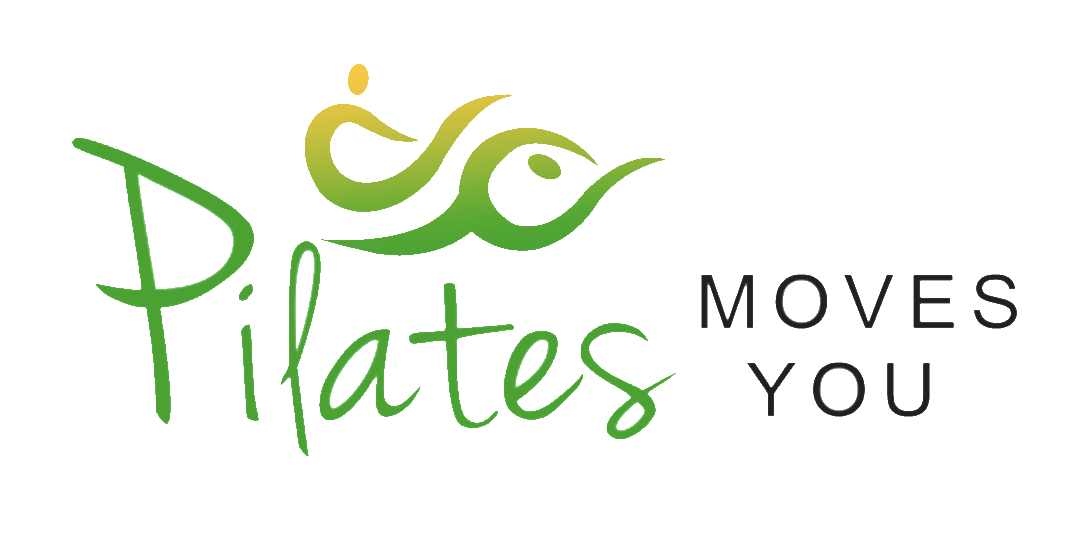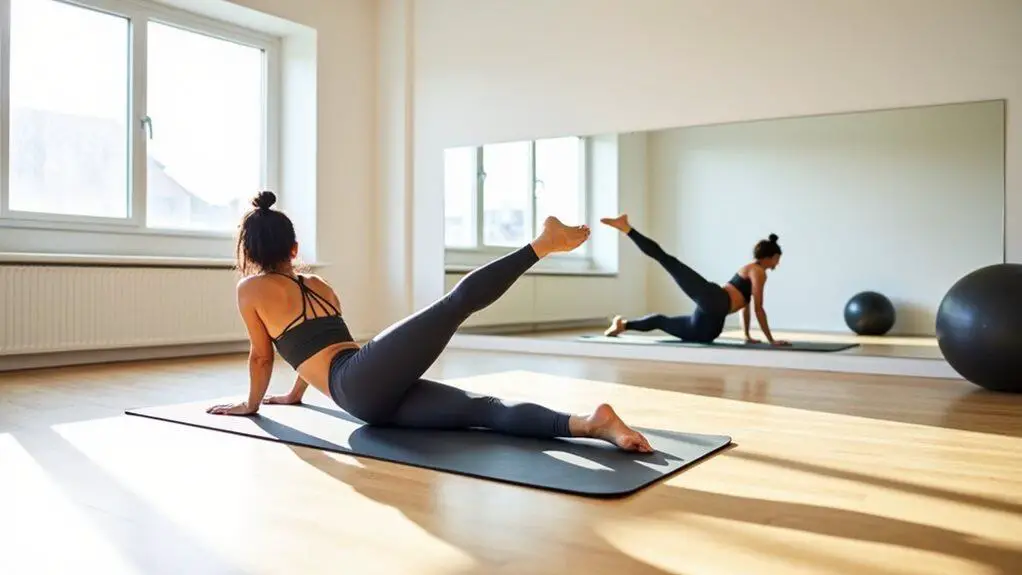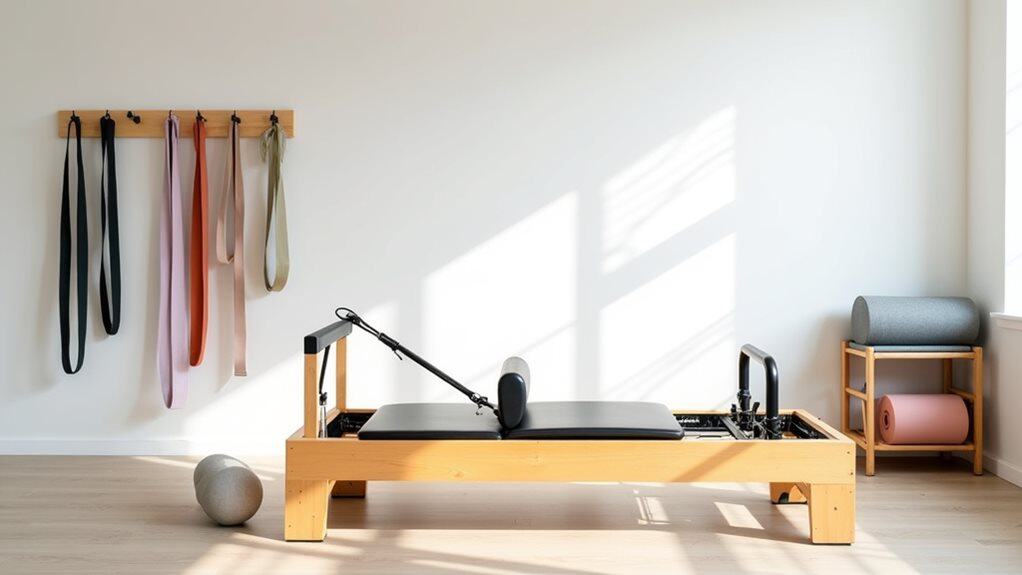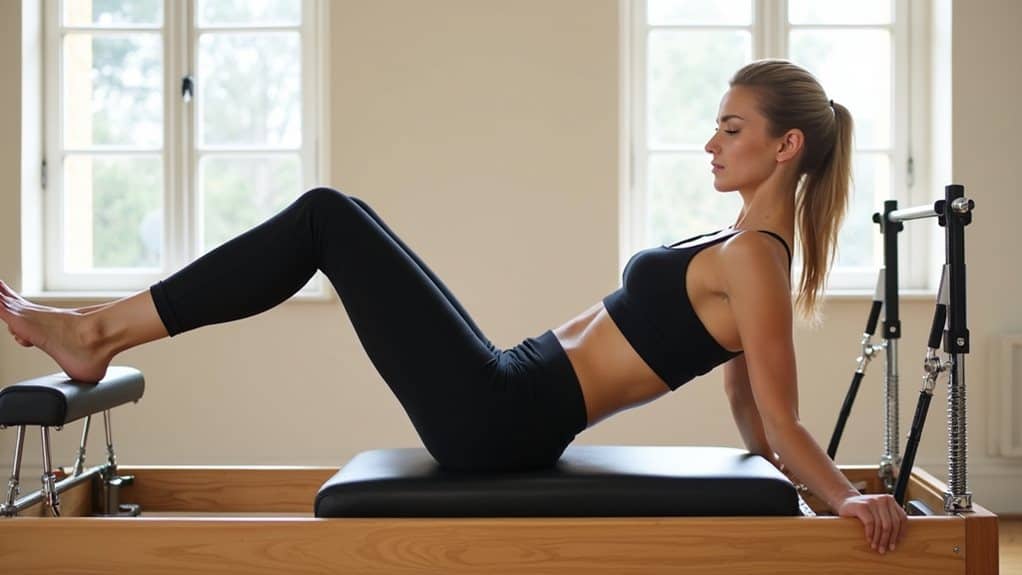In the hustle and bustle of modern life, a restful night’s sleep can often feel like an elusive treasure. While countless remedies and practices are recommended for improving our nightly rest, few would immediately think of Pilates as a gateway to nocturnal tranquillity.
Pilates can enhance relaxation and reduce stress by focusing on core strength, flexibility, and mindfulness, leading to better sleep quality. Regularly practising Pilates can help regulate sleep patterns, improve overall bodily comfort at night, and foster a more restful slumber.
And yet, as we delve deeper into this fascinating intersection of movement and rest, we might uncover some unexpected connections between the gentle toning exercises of Pilates and the quest for the perfect night’s sleep.
Practical Tips: Integrating Pilates into Your Nightly Routine
Pilates isn’t just an activity reserved for gyms or studios; it can seamlessly become a part of your nightly wind-down process. The beauty of Pilates lies in its adaptability and emphasis on connecting the body with the mind, making it a suitable practice before bedtime. By incorporating specific exercises and stretches, you can harness the relaxation benefits of Pilates to prepare your body and mind for a peaceful slumber.
Integrating Pilates exercises every night might seem daunting for beginners, but it doesn’t have to be an extensive session. As little as 10 minutes can make a significant difference. Opt for moves emphasizing deep breathing, gentle stretching, and core stability. These promote relaxation and help release the physical tensions built over the day, easing the transition into sleep.
Quick Tips for Nightly Pilates:
- Start with deep, diaphragmatic breathing to center yourself.
- Choose gentle movements like the Pelvic Tilt or Spine Twist to release tension.
- Avoid intense or strenuous exercises that could be overstimulating.
- Ensure your environment is conducive: dim lights, soft music, or silence.
- Consistency is key: even a few nightly minutes can yield better sleep.
The Principles of Pilates: A Brief Overview
At its core, Pilates is more than just a set of exercises; it’s a holistic approach to body conditioning that melds the mind and body. Joseph Pilates developed the practice in the early 20th century, and while it has evolved over the years, it still maintains its foundational principles. These principles guide each movement and the intention and focus behind every exercise.
- Centering: Often referred to as the body’s ” powerhouse, ” Pilates emphasizes the importance of beginning each exercise from a centered place, focusing on the area between the lower ribs and pubic bone. This engages the core muscles and brings awareness to the body’s center.
- Concentration: Pilates requires full attention. Every movement is done with purpose and intention, ensuring maximum benefit and minimizing the risk of injury. This focus allows practitioners to connect deeply with their bodies.
- Control: Rather than rushing through repetitions, Pilates stresses the significance of controlled, deliberate movements. This control ensures that muscles are worked properly without momentum taking over.
- Precision: Details matter in Pilates. Precise alignment and execution are paramount. A single perfect movement is valued over numerous imperfections.
- Breath: Breathing is integral to Pilates. Proper breathing techniques fuel the exercises, oxygenate the muscles, and help focus the mind. Typically, exhaling is emphasized during the most challenging part of a movement.
- Flow: Every Pilates movement is meant to flow seamlessly into the next, ensuring fluidity, grace, and efficiency in the routine. This principle creates a dance-like quality to Pilates workouts.
By understanding and embracing these fundamental principles, practitioners optimize their physical benefits and cultivate a heightened sense of self-awareness and mindfulness – invaluable tools inside and outside the studio.
The Mind-Body Connection: Stress, Relaxation, and Sleep
The intricate dance between our mental and physical states is an enduring subject of fascination. Often, the struggles of the mind manifest physically and vice versa. In the context of sleep, this connection is particularly pronounced. Understanding the mind-body relationship can offer profound insights into enhancing sleep quality and overall well-being.
Stress: The Silent Sleep Thief
When stress invades our lives, it activates our body’s “fight or flight” response. While crucial in emergencies, this survival mechanism can be detrimental when triggered chronically by daily stressors. Elevated cortisol levels, faster heart rates, and heightened alertness — all by-products of this response — are natural enemies of sleep. The brain becomes overactive, and the body tenses up, making drifting off to sleep challenging.
Pilates: A Bridge to Relaxation
Here’s where Pilates comes into play. Its foundational principles, such as deep breathing and concentration, serve as direct counteractions to stress.
Pilates allows practitioners to shift from the high-strung “fight or flight” mode to a more relaxed state by emphasizing mindfulness and bodily awareness.
The controlled movements and emphasis on breath helps to release stored tensions, both mental and physical. This process calms the active mind and prepares the body for rest.
Reaping the Sleep Benefits
By addressing and alleviating stress, Pilates inadvertently advocates for better sleep. The relaxation achieved through a dedicated practice encourages a smoother transition into the sleep cycle.
The barriers to restful sleep diminish when the mind is serene, and the body is free from tension. Thus, fostering a regular Pilates routine can be a proactive approach to combat sleep disruptions, guiding us closer to nights of sweet dreams and rejuvenating rest.
Physical Benefits: How Pilates Prepares the Body for Rest
Pilates, known primarily for its role in strengthening and toning, has various physical benefits that indirectly set the stage for a night of restorative sleep. When subjected to daily routines, the body often accumulates tension, especially in the shoulders, back, and neck.
This built-up tension can be a major roadblock for those trying to attain deep, uninterrupted sleep. Through its myriad targeted exercises, Pilates provides an avenue to release this tension and realign the body, ensuring optimal comfort during rest.
The emphasis on core strength in Pilates is another vital component. A strong core doesn’t just relate to a toned abdomen; the central pillar supports the spine and ensures proper postural alignment. Regular Pilates practice can alleviate common postural issues like lower back pain or slumped shoulders, which often interfere with sleep comfort.
Additionally, focusing on flexibility ensures that muscles remain limber, reducing the chances of nighttime cramps or stiffness. In essence, the physical conditioning provided by Pilates creates a body environment more conducive to relaxation and, subsequently, a more peaceful slumber.
Breathing Techniques: The Link Between Pilates and Deep Sleep
Breathing, while a natural and essential process, holds power beyond its basic function of oxygenating our bodies. Our breath can become a relaxation, focus, and healing tool when harnessed correctly. Pilates emphasizes proper breathing techniques, recognizing their potential to connect the body and mind. This focus on breath elevates the exercises’ effectiveness and is pivotal in preparing the body and mind for restorative sleep.
In Pilates, the “lateral thoracic breathing” technique is often employed. This method involves inhaling deeply through the nose, allowing the ribcage to expand sideways, and exhaling fully through the mouth, engaging the core muscles to press out every last bit of air.
This type of breathing promotes oxygen circulation, revitalizing tired muscles and releasing bodily tension. Beyond the physical, the rhythmic pattern of deep inhalations and exhalations acts as a meditative practice, helping to quiet a restless mind and reduce anxiety or stress.
This synergy between the physical and mental aspects of breathing in Pilates has profound implications for sleep. A calm mind, coupled with a relaxed body, is the optimal state for entering deep sleep cycles. By incorporating Pilates breathing techniques into nightly routines, one can create a bridge from the alertness of the day to the tranquility needed for a restful night.
Sources:
https://viveactive.com.au/sleep-and-exercise/
https://www.ncbi.nlm.nih.gov/pmc/articles/PMC7105773/
https://thepilatesclass.com/blogs/tpc-wellness/does-sleep-quality-affect-my-workout-routine




